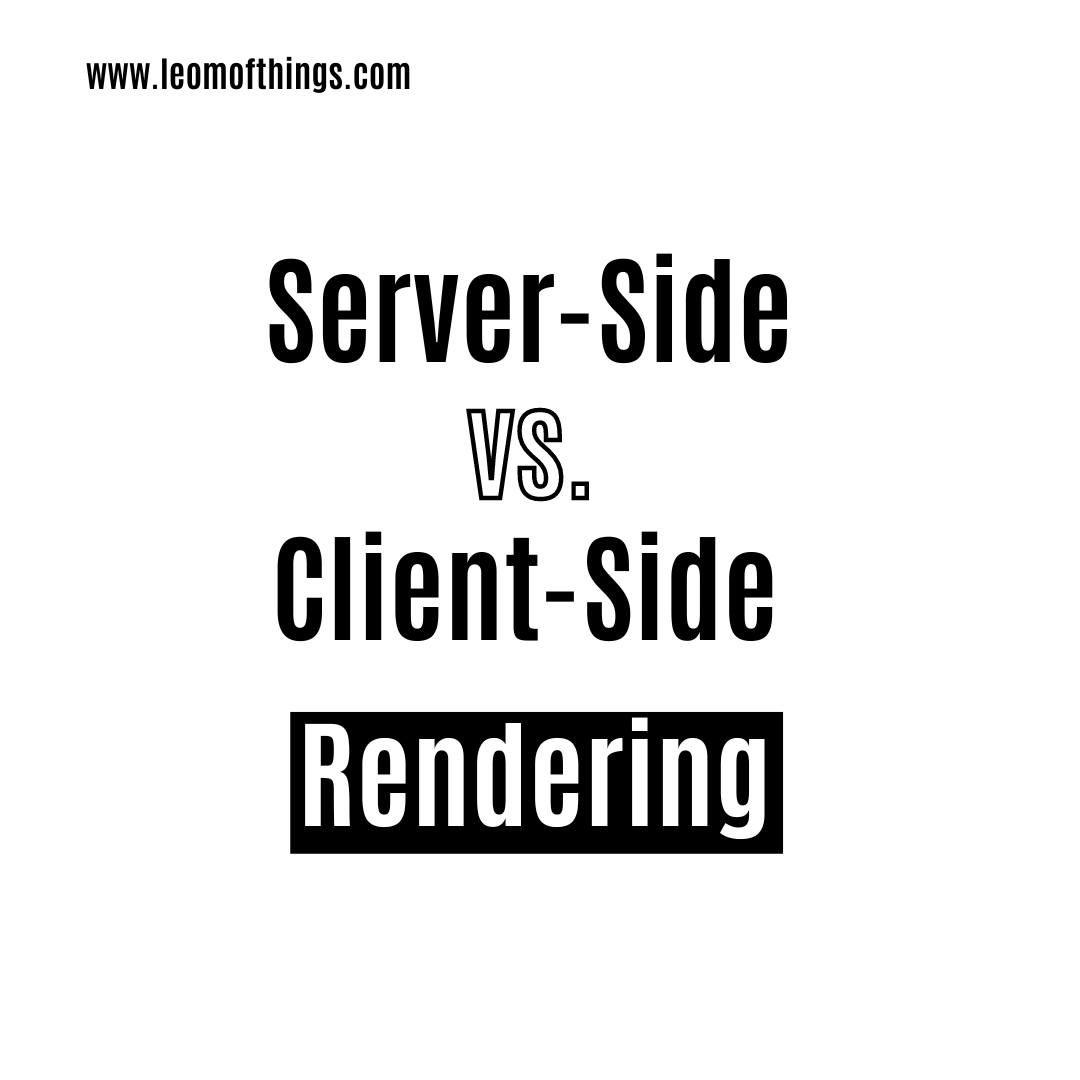As a growing software engineer, the choice between server-side rendering (SSR) and client-side rendering (CSR) is a critical decision that can significantly impact the performance and user experience of your web application. Both SSR and CSR have their advantages and disadvantages, and understanding when to use each approach is essential for building modern web applications. In this article, you’ll learn about these two rendering techniques, with code samples to illustrate their differences.
Server-Side Rendering (SSR)
Server-Side Rendering (SSR) is an approach where the server handles the rendering of your code into a presentable HTML format for a web page from the server and sends it to the client’s browser. This means that when a user requests a page, the server fetches the necessary data, processes it, and returns an HTML document that is ready to be displayed in the browser.
Code Sample – SSR with Node.js and Express.js
import express from 'express';
// Create an Express application
const app = express();
// Route for rendering a page
app.get('/page', (req, res) => {
const data = fetchData(); // Fetch data from a database or API
const html = renderPage(data); // Generate the page with the data
res.send(html); // Dispatch the HTML response to the client
});
// Start the server on port 3000
app.listen(3000, () => {
console.log('Server is operational on port 3000');
});
Pros of SSR:
- Improved SEO: Search engines can easily crawl and index content since it’s present in the initial HTML response.
- Faster Initial Load: Users see content sooner because they don’t have to wait for JavaScript to download and execute.
- Accessibility: Content is available even if JavaScript is disabled or fails to load.
Cons of SSR:
- Server Load: Rendering pages on the server can be resource-intensive, especially for complex applications with many users.
- Slower Subsequent Navigation: Navigating between pages may be slower as it requires additional server requests.
- Limited Interactivity: Building highly interactive applications may require additional client-side JavaScript.
Client-Side Rendering (CSR)
Client-Side Rendering (CSR) is a technique where the web server sends a minimal HTML page to the client’s browser, along with JavaScript. The JavaScript then fetches data and renders the page in the browser, giving the user a more dynamic and interactive experience. In this scenario, if your browser does not allow Javascript, certain parts of the application that use Javascript will not work because the browser itself is performing the manipulation and rendering of the data.
Code Sample – CSR with React.js
import React, { useEffect, useState } from 'react';
function Page() {
const [data, setData] = useState([]);
useEffect(() => {
fetchData()
.then((response) => setData(response));
}, []);
return (
<div>
{/* Render the data in the component */}
{data.map(item => (
<div key={item.id}>{item.name}</div>
))}
</div>
);
}Pros of CSR:
- Faster Subsequent Navigation: Once the initial page loads, navigating between pages can be very fast as the application doesn’t need to request full HTML from the server.
- Lower Server Load: The server mainly serves data, reducing the server’s rendering burden.
- Rich User Interactions: Highly interactive applications with complex user interfaces are easier to build.
Cons of CSR:
- Slower Initial Load: Users may experience a slower initial load as they have to wait for JavaScript to fetch and render content.
- SEO Challenges: Search engines may have difficulty indexing content since it relies on JavaScript execution.
- Accessibility: Ensuring full accessibility requires extra effort due to the reliance on JavaScript.
When to Use Each Approach
The choice between SSR and CSR depends on the specific requirements of your web application:
- Use SSR when:
- SEO is a top priority.
- You have limited client-side interactivity requirements.
- It would help if you had faster initial page load times.
- Use CSR when:
- You’re building a highly interactive single-page application (SPA).
- SEO is not a primary concern, or you have implemented server-side rendering for specific pages.
- You want to offload rendering work to the client and reduce server load.
In many cases, a hybrid approach known as “Hybrid Rendering” can be beneficial. This combines both SSR and CSR techniques to leverage their respective strengths for different parts of the application.
In conclusion, the choice between Server-Side Rendering and Client-Side Rendering is a crucial decision that impacts how your web application performs and scales. By understanding the strengths and weaknesses of each approach, you can make informed decisions to deliver the best possible user experience for your users.

